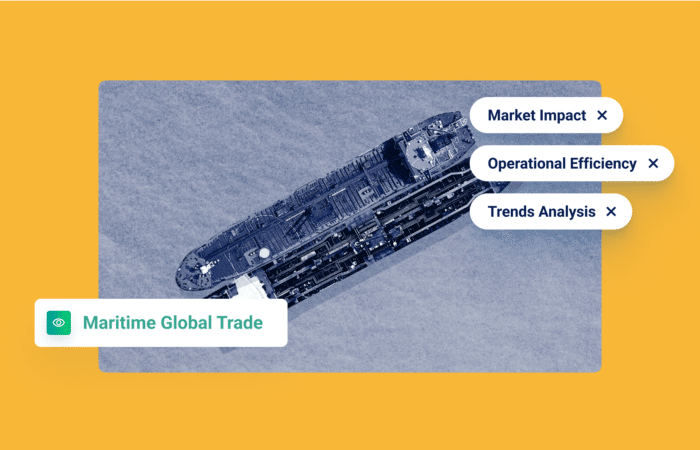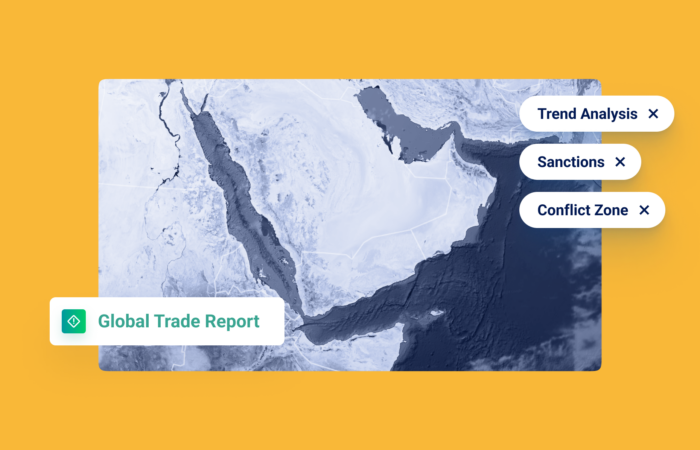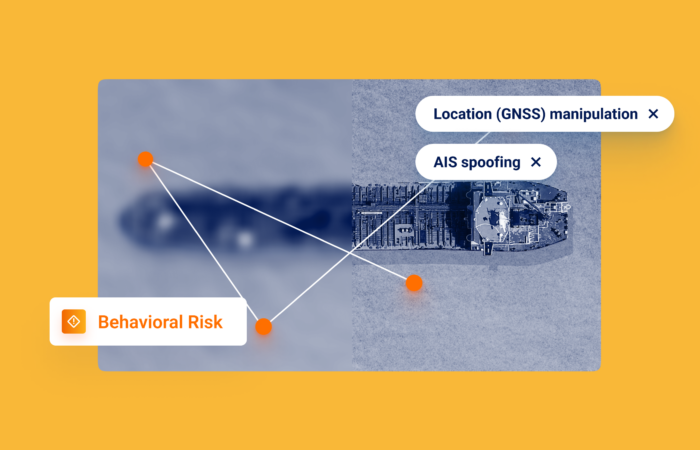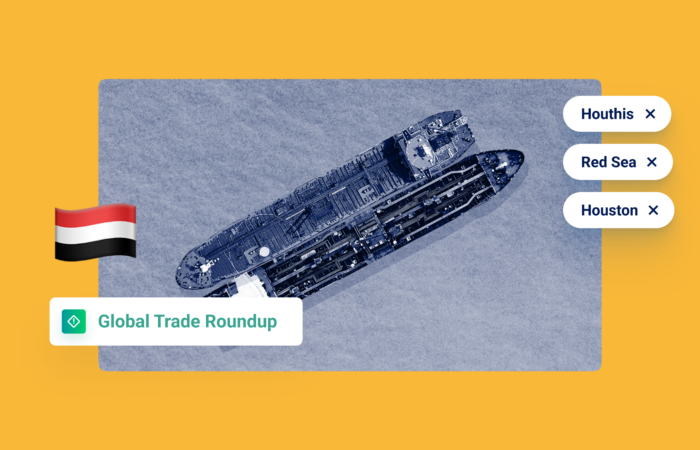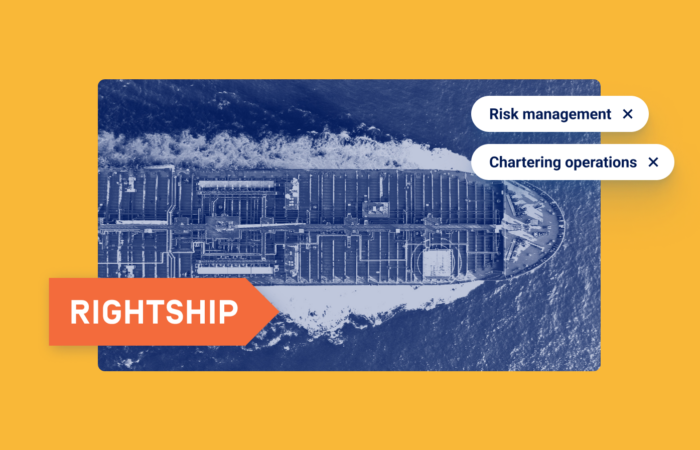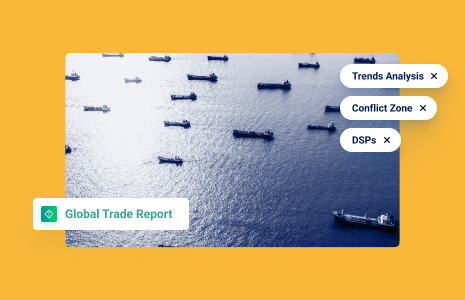What’s inside?
Do you want the three necessary components to detect location (GNSS) manipulation (aka “spoofing”)?
Windward was featured in a recent webinar that offered a deep dive on how to harness a maritime multi-source approach to not only immediately detect spoofing, but also verify it.
The leading satellite data provider in the market, Spire Global, hosted Nadav Libhaber, the Director of Partnerships at Windward, and Marc Bernabeu Peña, Senior Customer Success Manager at Planet, the largest earth observation satellite network.
A Growing Problem
The session, entitled “Combining technologies to uncover and mitigate vessel spoofing-related risks,” started off by defining the scope of the problem. 2023 has already seen a 12% increase in worldwide deceptive shipping practices (DSPs) and a whopping 48% increase in tracked position spoofing events (YTD for both phenomena).
DSPs are tactics utilized by bad actors to evade detection, sanctions, and regulations while engaging in illegal operations, such as oil smuggling and illegal trading. These practices can make it difficult to track the movement of cargo, identify the true owners of vessels, and enforce sanctions.
Location (GNSS) manipulation, or spoofing, is the use of a machine-generated location/path to disguise the true location of the vessel. Multiple methods have been identified to carry out this deception, including false transmission onboard the vessel and third-party onshore accomplices. This technique is growing at an exponential speed compared to other DSPs and must be combatted…but how?
Check Out Windward’s DSP Guide to learn more!
“The heart of the problem lies in the vastness of the world’s oceans and the limitations of current sensor deployment, which cannot comprehensively surveil every single location,” said Nadav during the webinar.
“Without real-time context, even the most advanced satellite images are of little use in the swift interception of nefarious maritime activities. So, how do we navigate these rough waters literally? The answer does not lie in a single technology, but a combination of advanced remote sensing, artificial intelligence, and positional verification methodologies, inspired by modern defense tactics.”

A Dynamic Demo
Webinar viewers didn’t have to trust what Nadav, Marc and webinar host Marek Poetzsch, Senior Project Manager at Spire, were telling them. They walked viewers through a detailed demo, including the solutions and user interfaces, that explained the optimal multi-source approach for detecting and verifying spoofing:
- Predictive analytics – Windward
- Corroborative imagery – Planet
- Location verification – Spire
The best approach starts with a Maritime AI™ foundation featuring predictive analytics. Combining AI with sensor technology enables maritime organizations to transcend limitations, enhancing their maritime operations and decision-making processes.
Predictive analytics forecast potential movements, considering environmental factors, but also analyzing historical data and real-time visibility, offering actionable visibility. Once suspicions have been raised, tipping and cueing comes into play…
Tipping and cueing refers to the leveraging of AIS transmissions and remote sensing data to provide specific information about vessels, or other objects of interest. Possible issues are identified in low resolution (“tipping”) and then satellites can zoom in on that area (“cueing”) to clarify.
Planet’s network of satellites can show where vessels are actually located by providing high-resolution satellite imagery.
But even this doesn’t give you 100% certainty – another layer of verification is needed. Using advanced radio-frequency data. Spire’s AIS Position Validation capability independently calculates locations for vessels at the time of their AIS transmissions. These calculated locations can be used to validate a vessel’s reported position. This is a game-changer for detecting DSPs.
Corroboration and Verification
During the webinar, Marek Poetzsch, Senior Project Manager at Spire, explained four different results his organization sees when spoofing is suspected:
- Validated: the calculated position the signal is coming from correlates with the reported position of the vessel. This is the majority of all vessels.
- Out of footprint: the vessel deviates from its supposed path, sending AIS messages that are not legitimate.
- Fixed: A fixed AIS location is repeatedly sent, but the vessel is actually moving.
- No GPS: the GPS device is unplugged from the AIS transmitter, leading to an invalid position error code.
Marc from Planet elaborated on how the three organizations – Windward, Planet, and Spire – go beyond spoofing to detect a wide variety of DSPs.
“For broad area vessel detection, we can monitor large areas and then together with AIS location data from Spire and Windward’s capability to derive comprehensive insights from all the ship behaviors, you can start deriving the insights to detect and track any deceptive shipping practices.”
Watch the webinar


